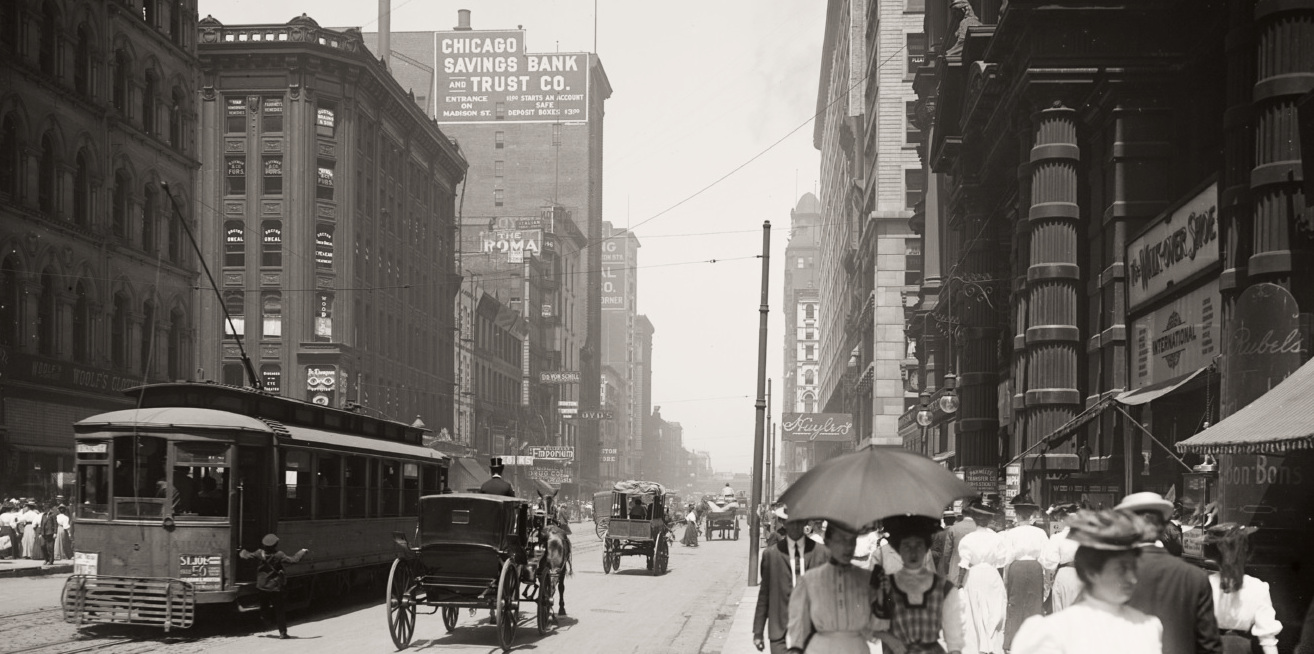Chicago, Illinois
Building, Breaking, Rebuilding
The following history of Chicago is text from chicago.gov. View their website for more information on the city that inspired so much of Carl Sandburg's poetry.

"It is hopeless for the occasional visitor to try to keep up with Chicago.
She outgrows his prophecies faster than he can make them.
She is always a novelty; for she is never the Chicago you saw when you passed through the last time."
Mark Twain – 1883
Chicago was only 46 years old when Mark Twain wrote those words, but it had already grown more than 100-fold, from a small trading post at the mouth of the Chicago River into one of the nation’s largest cities, and it wasn’t about to stop. Over the next 20 years, it would quadruple in population, amazing the rest of the world with its ability to repeatedly reinvent itself.
And it still hasn’t stopped.
Chicago continues to be a place that many people from diverse backgrounds call home. Before it was a city, it was the home to numerous indigenous peoples, a legacy which continues to frame our relationship with the city, the land, and the environment.
Today, Chicago has become a global city, a thriving center of international trade and commerce, and a place where people of every nationality and background come to pursue the American dream.
A Trading Center
Incorporated as a city in 1837, Chicago was ideally situated to take advantage of the trading possibilities created by the nation’s westward expansion. The completion of the Illinois & Michigan Canal in 1848 created a water link between the Great Lakes and the Mississippi River, but the canal was soon rendered obsolete by railroads. Today, 50 percent of U.S. rail freight continues to pass through Chicago, even as the city has become the nation’s busiest aviation center, thanks to O’Hare and Midway International airports.
The Great Fire of 1871
As Chicago grew, its residents took heroic measures to keep pace. In the 1850s, they raised many of the streets five to eight feet to install a sewer system – and then raised the buildings, as well. Unfortunately, the buildings, streets and sidewalks were made of wood, and most of them burned to the ground in the Great Chicago Fire of 1871. The Chicago Fire Department training academy at 558 W. DeKoven St. is on the site of the O’Leary property where the fire began. The Chicago Water Tower and Pumping Station at Michigan and Chicago avenues are among the few buildings to have survived the fire.
The White City
Chicago rebuilt quickly. Much of the debris was dumped into Lake Michigan as landfill, forming the underpinnings for what is now Grant Park, Millennium Park and the Art Institute of Chicago. Only 22 years later, Chicago celebrated its comeback by holding the World’s Columbian Exposition of 1893, with its memorable “White City.” One of the Exposition buildings was rebuilt to become the Museum of Science and Industry. Chicago refused to be discouraged even by the Great Depression. In 1933 and 1934, the city held an equally successful Century of Progress Exposition on Northerly Island.